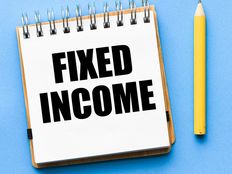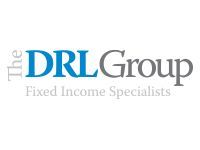
With continued Fed rate hikes, many fixed income investors are currently sitting on hefty unrealized market losses from their existing fixed income securities in their respective portfolios.
The picture isn’t any rosier when looking at the equity markets. The pandemic effect and supply chain issues are continuing to dampen the growth of many sectors of the economy, in turn presenting major headwinds for the equity markets. Furthermore, when pairing these challenges with broader economic issues like historic inflation, the near-term forecast looks uncertain for economic growth in the U.S. However, record high interest rates can be significantly beneficial for investors with access to liquidity and the ability to capitalize on current market conditions.
In this article, we will take a look at the overall impact of rising interest rates and how fixed income portfolios can capitalize on current market conditions.
Be sure to check our Municipal Bonds Channel to stay up to date with the latest trends in municipal financing.
The Consequences of Rising Interest Rates
Looking back at the beginning of this year, the Federal Reserve’s stance on bringing inflation down, maximizing employment, and fostering price stability has been an ongoing battle. In 2022, the Fed hiked the federal fund rate six times, brining it from 0.25% to 4.00% (see the chart below), all in an attempt to tame the 40-year high inflation that currently stands at roughly 8%.
By raising the rates, the Fed proposes to cool economic activity in the Unites States enough to slow the demand and in turn slow the rise in the price of goods and services. Many believe the sharp rise in the interest rate to control inflation will likely push the U.S. economy into recession. However, this hasn’t deterred Fed Chair Jerome Powell from his objective of focusing on out-of-control inflation numbers.

In their annual review of the fixed income markets, Raymond James’ publication revisits the conversation around the pandemic and its lingering affects that are continuing to present the current drag on economic conditions. “The 2020 pandemic initiated an unprecedented event, the partial or complete shutdown of various manufacturers, corporations and businesses. The consequences may have permanently changed how consumers fill their basket of goods and services.
Despite enduring demand, the supply problems continue to linger and hinder the economy with increasing prices. There is no guarantee that the Fed will be able to control certain aspects of inflation, specifically how quickly supply chain and labor cost issues are resolved. At the end of the day, if the Fed pushes rates high enough, they run the risk of slowing economic output and putting an end to any argument about whether the economy is in a recession.”
One of the key risks of managing a fixed income portfolio is interest rate risk, although this hasn’t been much of an issue in the historic low interest rate environment. Prior to the pandemic, it emerged as the key concern for many. It’s safe to say that all fixed income positions are in the red, due to the sharp rise in current interest rates. It’s widely known that when interest rates rise, fixed income securities take a hit commensurate to their coupon and overall maturity. The longer the duration of a fixed income security, the higher the interest rate risk and the higher the discount in the rising rate environment.
Total Return vs. Income From Fixed Income Portfolios
When reviewing current market conditions, it’s important to understand how investors can capitalize on the high rate environment. The answer lies in their re-investment strategy and liquidity positions.
Depending on the overall make-up of one’s investment portfolio and its durations, investors should consider chasing high yields and generate income that can be significantly higher than anything else in the portfolio.
As seen in the above chart, we can see the yield volatility in Treasuries within this year. It’s safe to assume other fixed income instruments like corporate bonds, municipal debt, and other fixed income securities that have some level of underlying risk should be returning much higher than Treasuries.
In the current times, fixed income investors can position themselves to capitalize on higher rates for the duration of presently bought investments. For example, a fixed income instrument purchased in the current market, with relatively high credit quality, can be a very wise investment that can stay in the portfolio and generate hefty returns compared to older investments. When the inflation target is achieved, with either a safe landing or recession, high interest rates are bound to come down. It’s also possible they come down quite fast, so the current opportunity may not be present for a long time.
The Bottom Line
The current market conditions are quite unique; we are seeing significant unrealized market losses in all portfolios. Some are due to rising interest rates, while others are due to the market outlook and the health of the U.S. consumer.
The Fed has indicated it will continue to stay on the path of interest rate hikes until they achieve their objective of price stability. This means that fixed income markets will continue to see a drag, both from the investor perspective and the issuer perspective. An investor with available liquidity can capitalize on the current market conditions.
Sign up for our free newsletter to get the latest news on municipal bonds delivered to your inbox.






